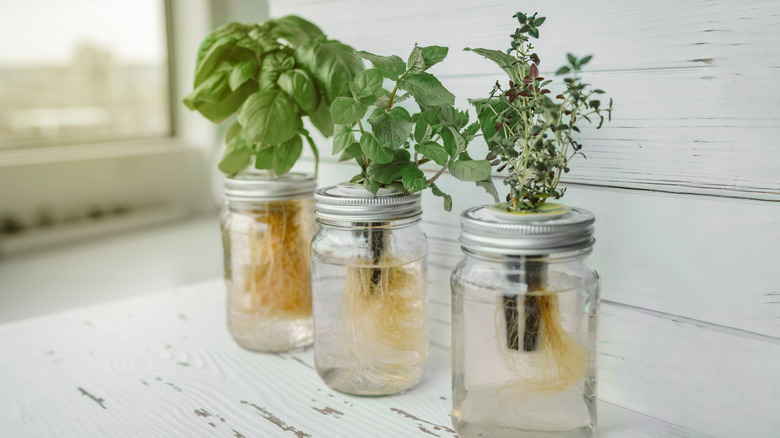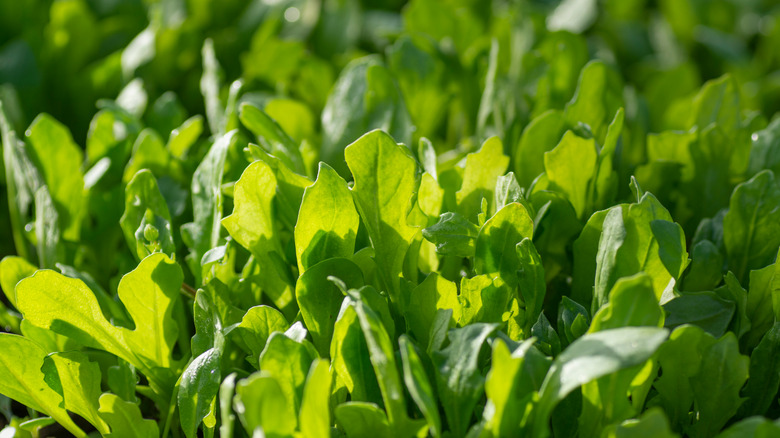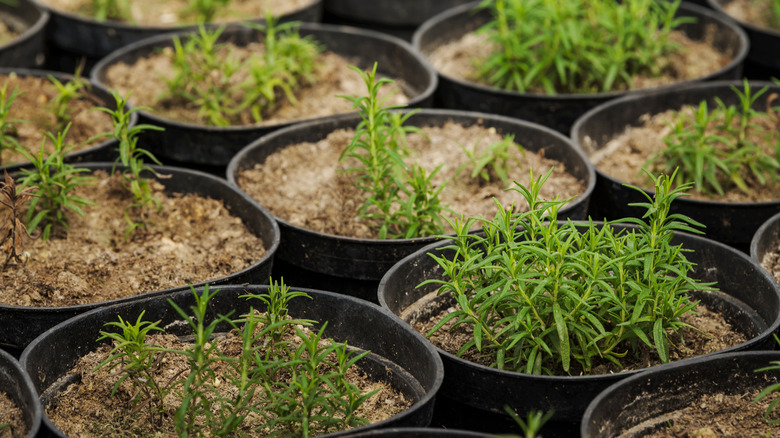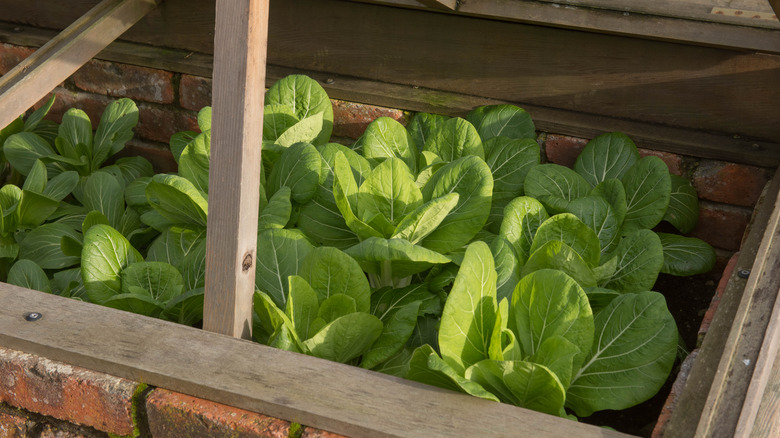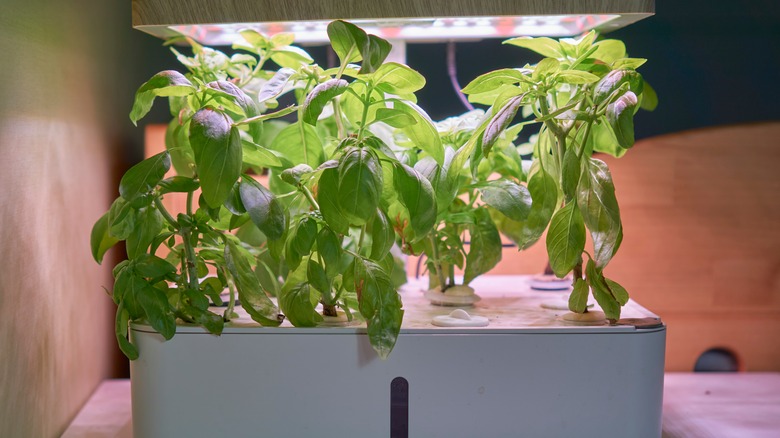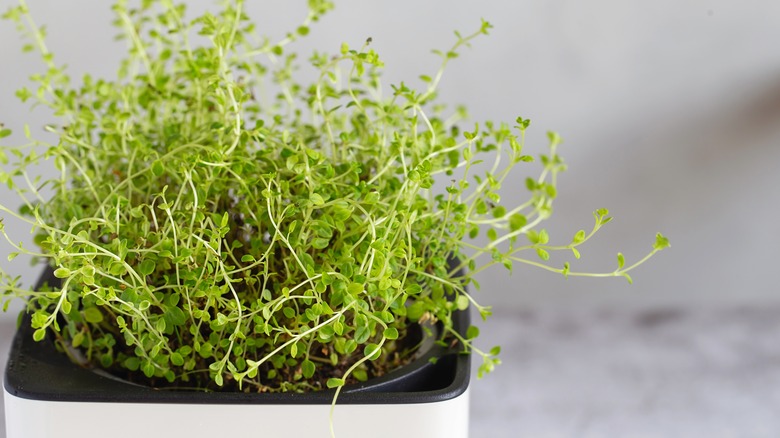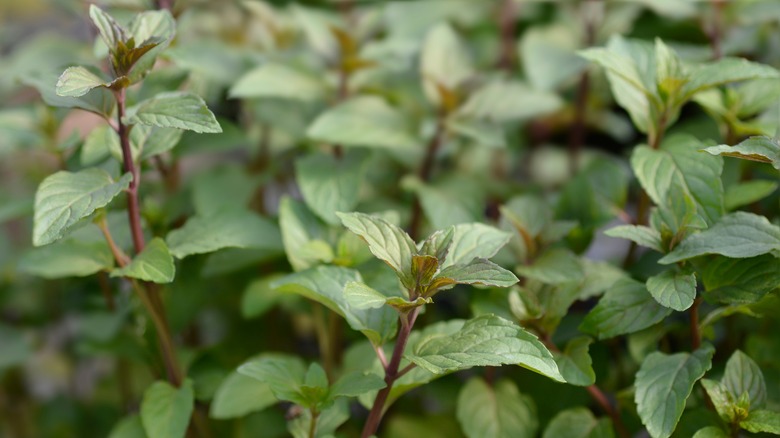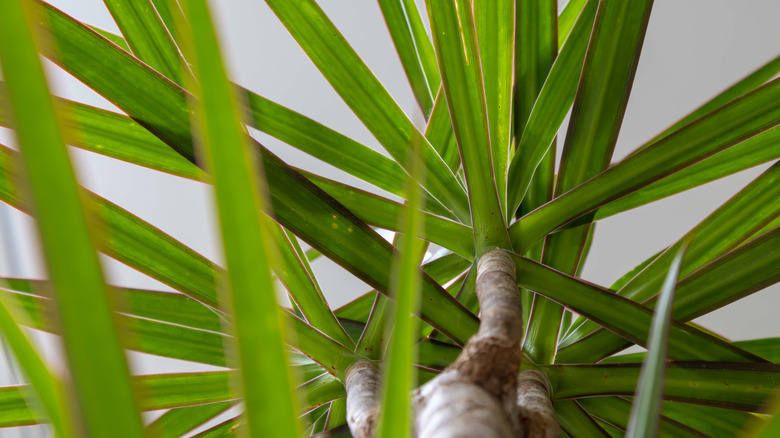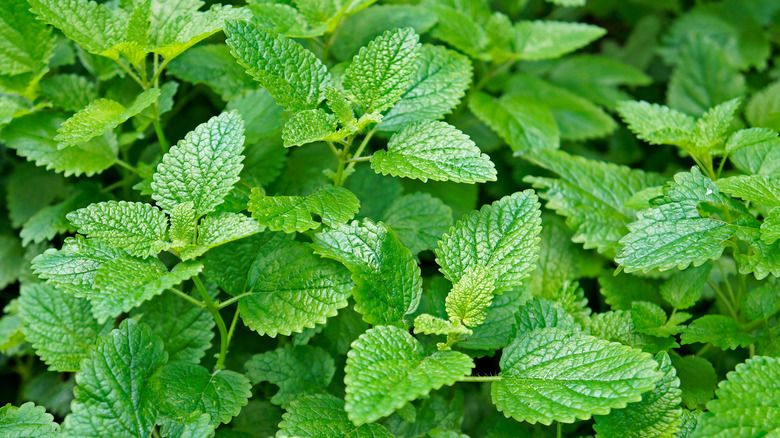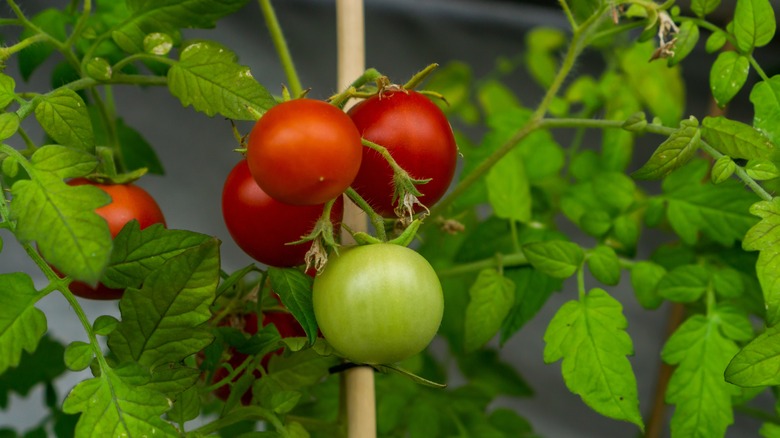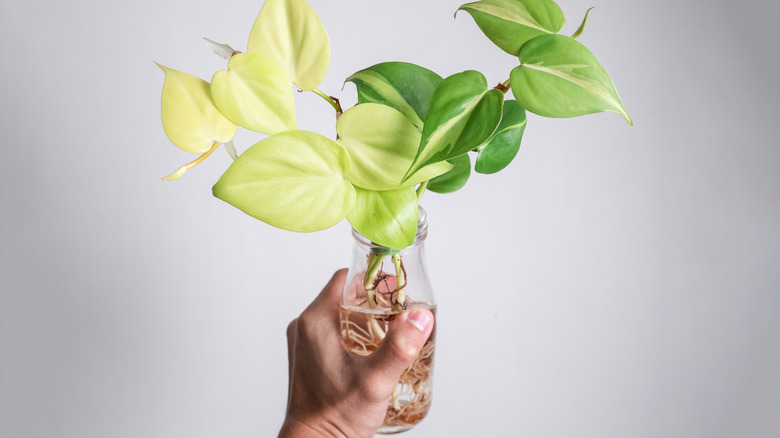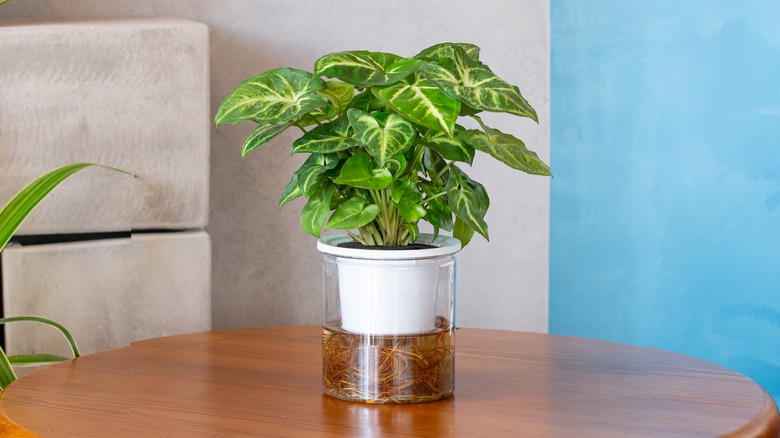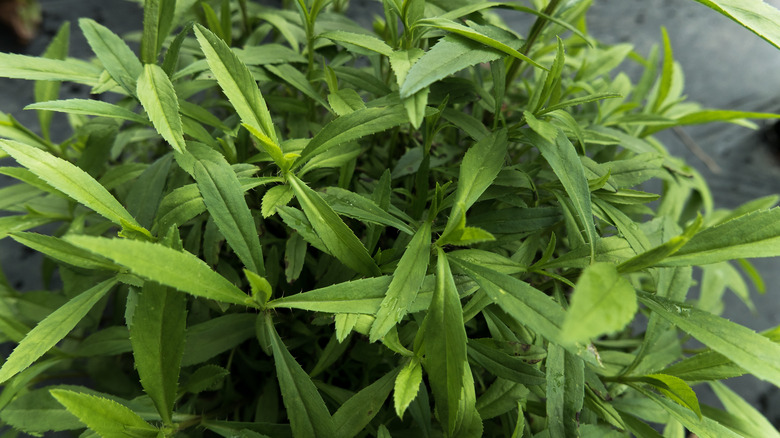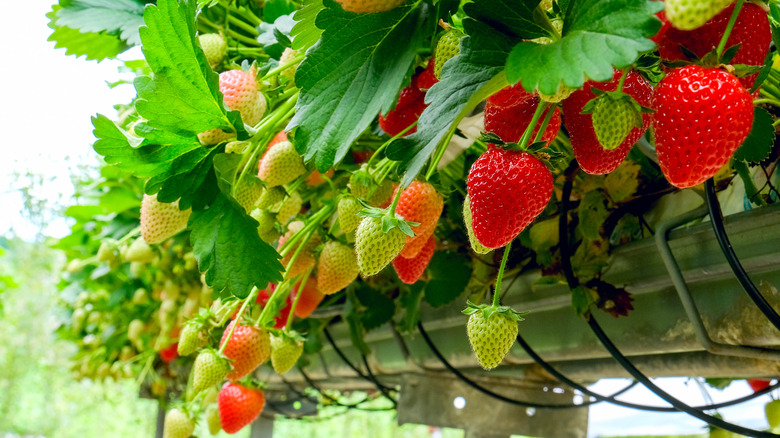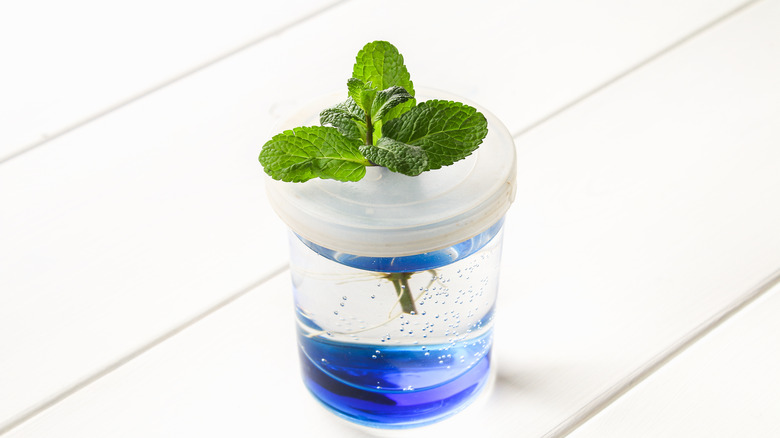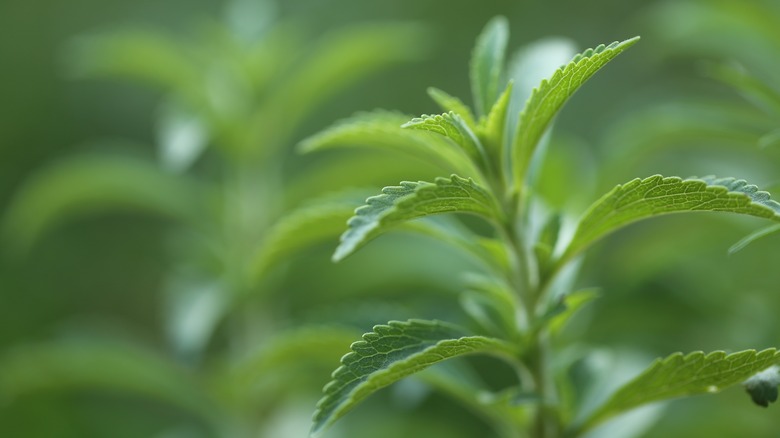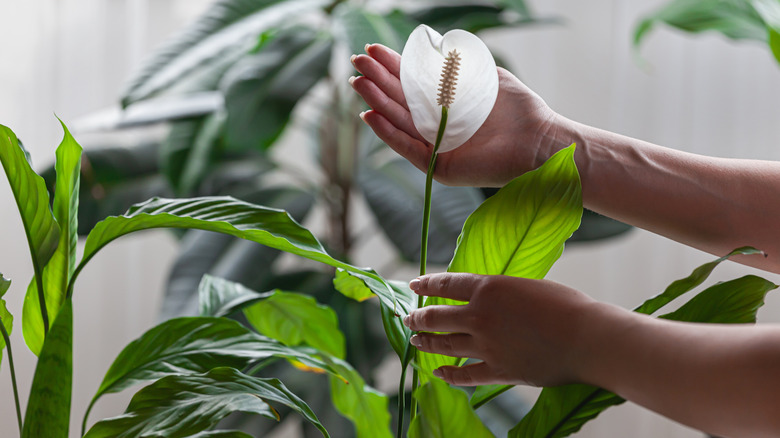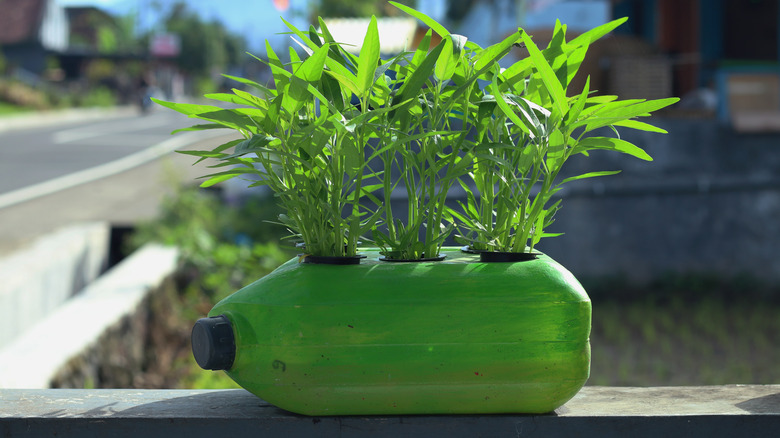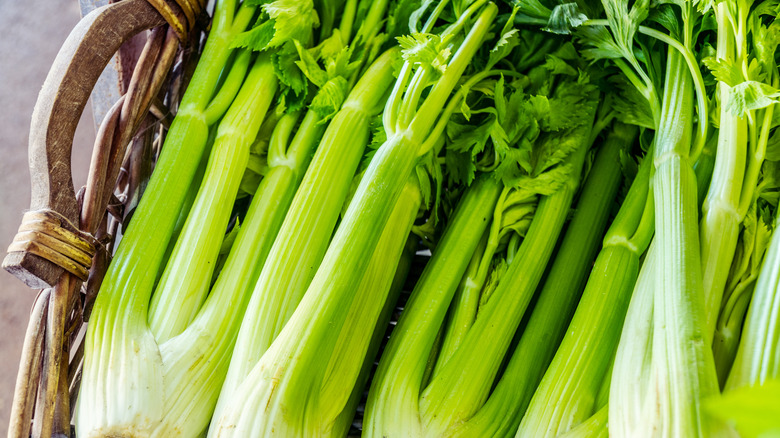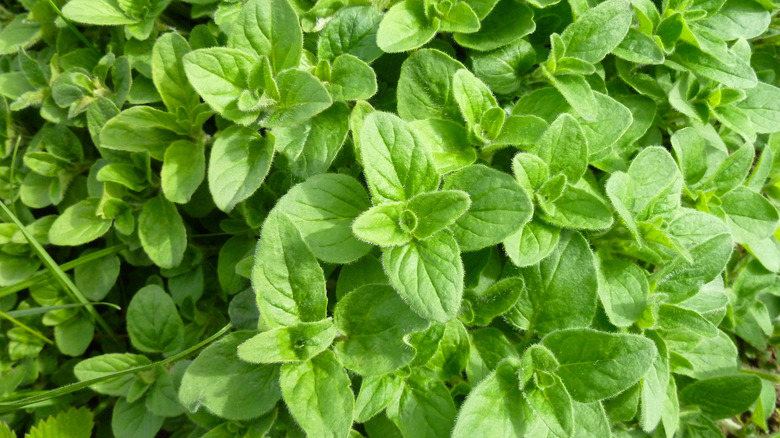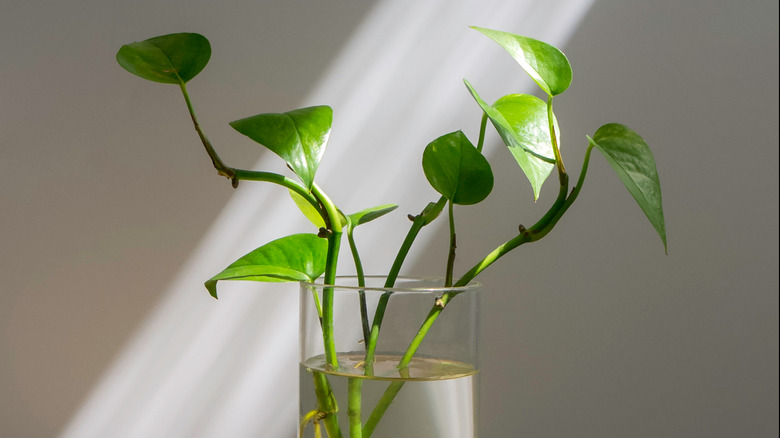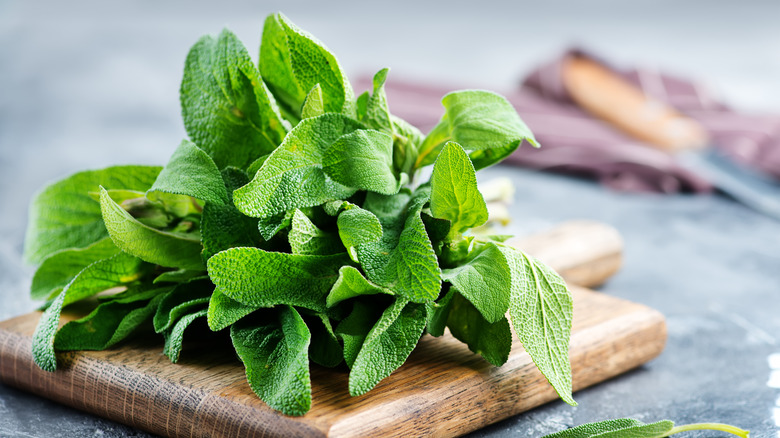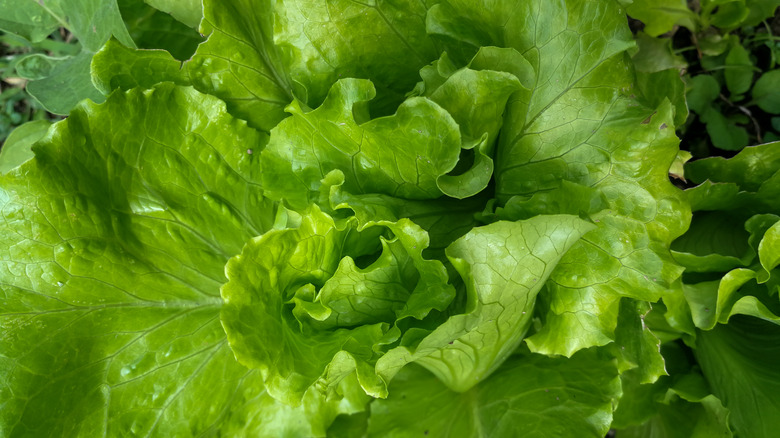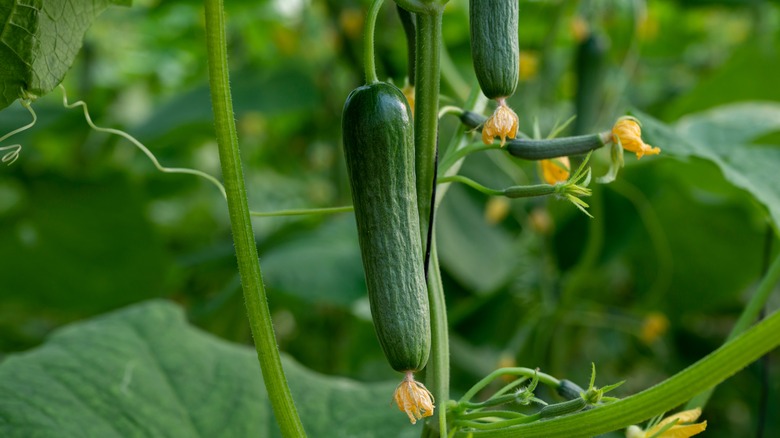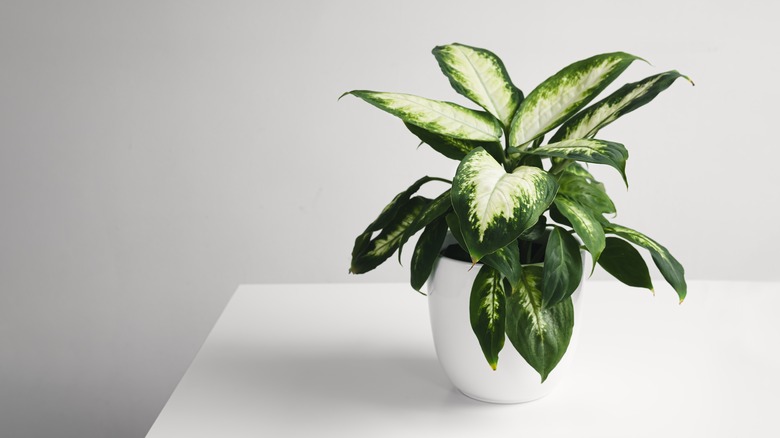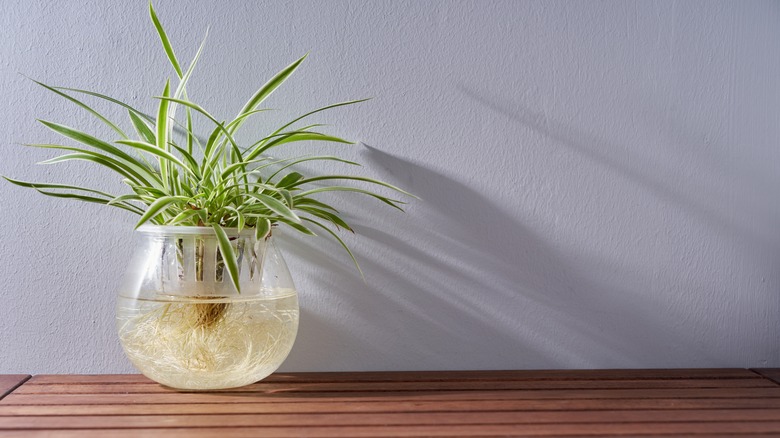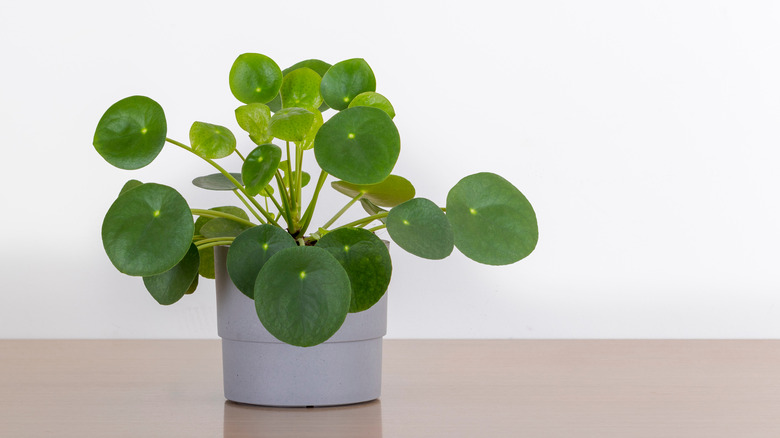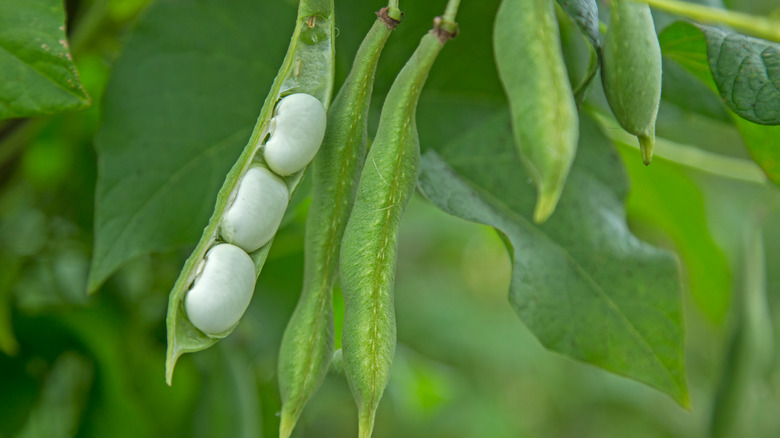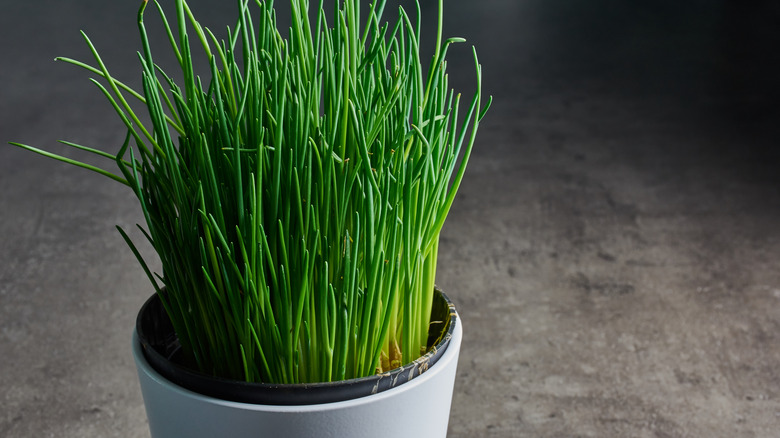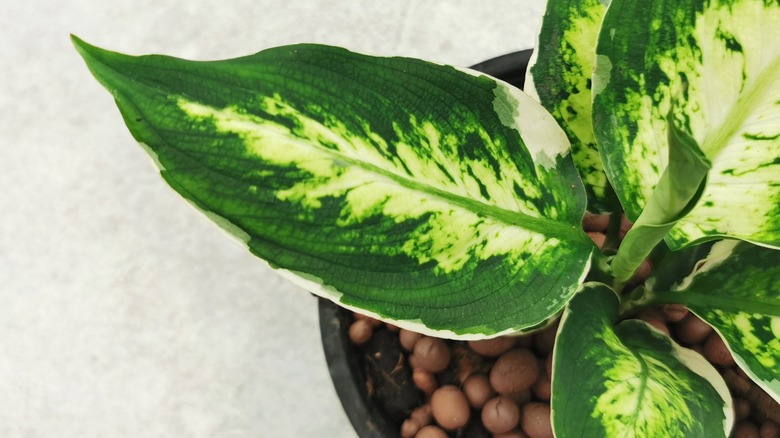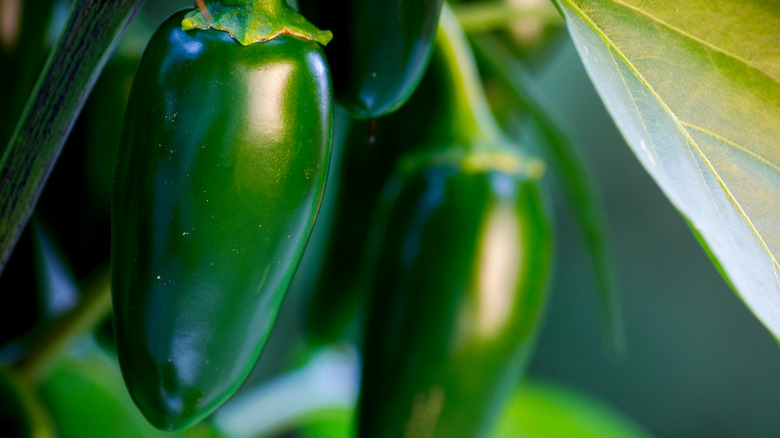30 Plants You Can Grow In An Indoor Hydroponic Garden
During the beginning of the Covid-19 pandemic, people stuck inside their homes quickly grew bored of Netflix and going down various rabbit holes on the internet. Because of this, we got creative and looked for indoor activities that would help us hone our skills in the kitchen, garden, and other areas around the home. Along with making bread from scratch and whipped dalgona coffee, small-scale hydroponic gardening found lots of popularity across the country. Hydroponic gardening is a way of growing a variety of vegetables, herbs, houseplants, flowers, and more without soil, as per the University of Minnesota Extension.
This technologically advanced method of gardening has actually been around for an extremely long time, but it has taken many years to reach our homes. Along with the quarantine, at-home hydroponics was also popularized by brands like Aerogarden, which provide kits to beginner hydroponic gardeners complete with seed pods, liquid plant food, and full-spectrum LED lights that encourage healthy plant growth. However, fancy kits are not necessary to start your hydroponic journey. A simple setup can be created with things you might already have at home. All you need is an opaque container, a net pot, substrate, liquid plant food, and one or more of the following 30 plants in the form of seeds or cuttings.
1. Arugula
Arugula (Eruca sativa) isn't only delicious on sandwiches, bagels, and salads, but it's also super simple to grow in a hydroponic garden, as told by Eden Green. Like other leafy greens, this plant is packed with good things such as vitamin K and iron. When growing arugula in a traditional garden, it is known to become weedy, as per the University of Wisconsin-Madison, so planting it indoors this way offers multiple benefits.
Sunlight Needs: Bright light
Water Needs: Submerge the plant's roots in water
Bloom Season: Seasonal bloomer
Size: 2 to 3 feet tall and 1 foot wide
2. Rosemary
Grown outdoors, rosemary (Salvia rosmarinus) can show off a large and bushy shape, as explained by RHS. However, if you only need to use a few sprigs every so often, you can grow it as a small plant in a hydroponic garden. Keeping herbs like this available on your kitchen counter can help you save money at the grocery store on fresh and dried herbs.
Sunlight Needs: Bright light
Water Needs: Submerge the plant's roots in water
Bloom Season: Summer
Size: Up to 8 feet tall and wide
3. Bok choy
Bok choy (Brassica rapa ssp. chinensis) is a type of cabbage that is typically used in Asian dishes. According to North Carolina State Extension, the leaves and stems of the plant are edible whether they are cooked or kept raw. Growing it indoors at home is favorable because it loses quality in storage in less than 14 days.
Sunlight Needs: Bright light
Water Needs: Submerge the plant's roots in water
Bloom Season: Summer
Size: Less than 12 inches tall and wide
4. Basil
The basil plant (Ocimum basilicum) is used in a wide variety of recipes, which makes the plant so valuable in the kitchen. You can grow many different cultivars of the plant at the same time for different flavors and textures. Some of the most commonly grown varieties of basil include Italian basil, Greek basil, Anise basil, and Thai basil, as shown by Missouri Botanical Garden.
Sunlight Needs: Bright light
Water Needs: Submerge the plant's roots in water
Bloom Season: Summer to fall
Size: 2 feet tall and wide
5. Thyme
Thyme (Thymus vulgaris) is another common herb that you should consider growing indoors hydroponically. The herb is most often used in the kitchen, but it also has some medicinal uses, as explained by North Carolina State Extension. Thyme is a very fast grower and is low maintenance. Other than providing it with water and liquid fertilizer, it will require little attention over its lifespan.
Sunlight Needs: Bright light
Water Needs: Submerge the plant's roots in water
Bloom Season: Spring and summer
Size: 6 to 12 inches tall and wide
6. Chocolate mint
If you like fancy drinks, romantic potpourri, or a delicious pint of mint chocolate chip ice cream, chocolate mint (Mentha × piperita 'Chocolate Mint') must become an addition to your indoor hydroponic garden. This mint variety, which smells exactly as the name suggests, can have more than one use in your home, as per Missouri Botanical Garden. Its delightful taste and scent can make any dish more luxurious.
Sunlight Needs: Bright to medium light
Water Needs: Submerge the plant's roots in water
Bloom Season: Summer to fall
Size: Up to 2 feet tall
7. Dragon tree
Herbs and vegetables aren't the only plants that you can grow this way. Beautiful houseplants can be grown hydroponically too. Dragon trees (Dracaena marginata) are one great option as they require little maintenance once they are settled. North Carolina State Extension describes their growth habit as slow but erect and arching. They can reach several feet tall and wide, so they will need to be pruned regularly.
Sunlight Needs: Medium to bright light
Water Needs: Submerge the plant's roots in water
Bloom Season: Spring
Size: 6 to 20 feet tall and 3 to 10 feet wide
8. Lemon balm
Lemon balm (Melissa officinalis) is an herb in the mint family that goes by a few other names, including lemon mint and balm mint, according to Utah State University. Though it is a type of mint, the flavor is actually more citrusy. Its leaves can be picked off as needed and used to flavor teas, desserts, and other dishes that could use a hint of lemon.
Sunlight Needs: Bright light
Water Needs: Submerge the plant's roots in water
Bloom Season: Summer to fall
Size: 2 to 3 feet tall
9. Tomatoes
Tomatoes (Solanum lycopersicum) can be included in almost any hydroponic garden setup. Many of the cultivars are easily grown indoors, even if you don't have the greenest thumb. Nothing tastes better than fresh tomatoes in a green salad or a pasta dish. As the Missouri Botanical Garden notes, some common varieties include cherry tomatoes, yellow-skinned tomatoes, and persimmons.
Sunlight Needs: Bright light
Water Needs: Submerge the plant's roots in water
Bloom Season: Summer
Size: 3 to 6 feet tall and 2 to 3 feet wide
10. Philodendron
If you enjoy home gardening, the heartleaf philodendron (Philodendron hederaceum) is most likely already growing in your home. Still, if you are growing yours in a pot with soil, you can propagate it to grow in a hydroponic garden, which is apparently quite easy to do, according to the University of Florida.
Sunlight Needs: Bright to medium light
Water Needs: Submerge the plant's roots in water
Bloom Season: Spring and summer
Size: 4 inches to 6 feet long
11. Arrowhead vine
The arrowhead vine (Syngonium podophyllum), which gets its name from its vining arrow-shaped foliage, is widely used as a houseplant. Its attractive growth habit makes it a valuable specimen for any room or aesthetic. RHS points out that green-leaved and variegated cultivars need different levels of light, so be careful with the type of LED light you are providing inside your hydroponic garden.
Sunlight Needs: Bright to medium light
Water Needs: Submerge the plant's roots in water
Bloom Season: Summer
Size: Up to 7 feet tall
12. French tarragon
French tarragon (Artemisia dracunculus 'Sativa') is a lesser-known culinary herb that is most often used for its pungent anise-like flavor, as explained by Missouri Botanical Garden. It can be identified by its dark green and narrow leaves similar to those of the dill plant. Growing this herb in your kitchen can make it easy to flavor your dishes with fresh leaves. Or, you can hang the stems to dry for later use.
Sunlight Needs: Bright light
Water Needs: Submerge the plant's roots in water
Size: 1 to 3 feet tall and wide
13. Strawberry bush
Believe it or not, even strawberries (Fragaria × ananassa) can be grown hydroponically inside your home. If you love fresh strawberries, we highly recommend doing this. Because hydroponic growth doesn't rely on the seasons outdoors, you can provide yourself with a delightful and sweet taste at any point during the year. North Carolina State Extension warns us that strawberry plants are quite high maintenance, so you will need to keep a close eye on yours.
Sunlight Needs: Bright to medium light
Water Needs: Submerge the plant's roots in water
Bloom Season: Spring
Size: 6 inches to 1 foot tall
14. Peppermint
Peppermint (Mentha × piperita) is a great herb to start with if you are new to hydroponic gardening at home. Utah State University mentions that the plant is relatively short growing, water-loving, and easy to care for. Known as an aggressive grower, peppermint plants are suitable in container gardens where they are unable to take over smaller plants nearby.
Sunlight Needs: Bright light
Water Needs: Submerge the plant's roots in water
Bloom Season: Summer to fall
Size: Up to 3 feet tall
15. Candyleaf
Candyleaf (Stevia rebaudiana), also known as sweetleaf or stevia, is a tender perennial plant that is grown for its foliage, which can be harvested and used as a sweetener in tea, coffee, baked goods, and more. North Carolina State Extension says that these leaves can be eaten cooked or raw, or you can dry them for later use. This plant does blossom; however, the flowers should be pruned to redirect the energy to the foliage.
Sunlight Needs: Bright to medium light
Water Needs: Submerge the plant's roots in water
Size: 1 to 2 feet tall and wide
16. Peace lily
The peace lily plant (Spathiphyllum spp.) grows wonderfully indoors with some indirect sunlight and little attention. Clemson Cooperative Extension suggests helping this beautiful flowering plant grow by providing it with liquid plant food every other month during the growing season. During this time is when the plant normally blooms. The flowers are lightly fragrant and bright white and green.
Sunlight Needs: Bright, medium, or low light
Water Needs: Submerge the plant's roots in water
Bloom Season: Spring
Size: 1 to 6 feet tall
17. Spinach
We all know about the benefits of eating dark leafy greens like spinach, so why not grow your own spinach plant (Spinacia oleracea) at home? Spinach is extremely versatile in the kitchen. From green smoothies to vitamin-packed casseroles, you won't have any trouble finding a use for your hydroponically grown spinach leaves. The University of Wisconsin-Madison reminds us that we can choose from more than seven varieties of plants to grow when we're ready.
Sunlight Needs: Bright to medium light
Water Needs: Submerge the plant's roots in water
Bloom Season: Summer
Size: 6 to 12 inches tall and wide
18. Celery
Celery (Apium graveolens var. dulce) is a vegetable that many of us should be eating more of. The plant in the Apiaceae family is known as an aggressive grower that is considered invasive in various parts of the United States, as told by the Missouri Botanical Garden. This is why it can be beneficial to grow indoors, so you won't have to worry about it taking over your outdoor garden.
Sunlight Needs: Bright light
Water Needs: Submerge the plant's roots in water
Bloom Season: Seasonal bloomer
Size: 24 to 30 inches tall and 12 to 18 inches wide
19. Oregano
Oregano (Origanum vulgare), which can be grown indoors, outdoors, and hydroponically, is a low-maintenance plant that produces edible leaves and seeds. It is perfect for growing in a small indoor garden where it is unlikely to grow much larger than 2 feet tall and wide, as suggested by Washington State University.
Sunlight Needs: Bright to medium light
Water Needs: Submerge the plant's roots in water
Bloom Season: Summer
Size: 2 feet tall and 2 feet wide
20. Pothos
Pothos plants (Epipremnum aureum) have a reputation for being the most popular and the easiest houseplants to grow. They come in various cultivars that show off different colors and patterns. Among the most beautiful of them is the 'Marble Queen' variety, which displays dark green leaves with streaks of cream, as described by the University of Wisconsin-Madison.
Sunlight Needs: Bright, medium, or low light
Water Needs: Submerge the plant's roots in water
Size: 6 to 10 feet long when grown indoors
21. Sage
The bushy sage plant (Salvia officinalis) can be grown smaller indoors for culinary and medicinal use with the right technique. As per RHS, the evergreen subshrub makes for a great container plant in addition to being a good choice for border gardens, cottage gardens, and coastal gardens. Its fragrant foliage is great for potpourris, rubbing on meats, and making aromatic butter.
Sunlight Needs: Bright light
Water Needs: Submerge the plant's roots in water
Bloom Season: Summer
Size: 16 inches tall and 24 inches wide
22. Lettuce
Lettuce (Lactuca sativa) is a no-brainer in a hydroponic kitchen garden. If you prefer fresh lettuce without the chemical taste that all grocery store lettuce seems to have, you should know that it isn't difficult to grow your own at home. Missouri Botanical Garden states that iceberg, romaine, loose leaf, and butterhead lettuce are some of the varieties that you can choose to grow.
Sunlight Needs: Bright light
Water Needs: Submerge the plant's roots in water
Size: 6 to 12 inches tall and wide
23. Cucumber
Even cucumbers (Cucumis sativus) can be grown indoors hydroponically. However, you should be aware that they will need much more space than other herbs and vegetables. Khang Starr on YouTube shows how he perfects his setup with a large tote and a lid with holes cut into it. Cucumber plants do need to be kept warm to grow properly, as told by North Carolina State Extension, which makes growing indoors ideal.
Sunlight Needs: Bright light
Water Needs: Submerge the plant's roots in water
Bloom Season: Summer
Size: 8 to 18 inches tall and 3 to 8 feet wide
24. Dieffenbachia
Dieffenbachia (Dieffenbachia spp.) are well-known for their leaves, which are usually green on the edges and have a light cream color in the center. Depending on the age of a dumb cane plant, it may be only a few inches high or more than 5 feet tall. As mentioned by the Clemson Cooperative Extension, the plant's growth will vary depending on the amount of light it's exposed to. The more bright light it receives, the quicker it grows.
Sunlight Needs: Bright, medium, or low light
Water Needs: Submerge the plant's roots in water
Size: 3 to 6 feet tall
25. Spider plant
The spider plant (Chlorophytum comosum) is likely an unsurprising addition to this list if you are familiar with its growth habit. It is known to be an easy and quick grower that thrives in a range of environments, including fertilized water. As told by the University of Wisconsin-Madison, many spider plant varieties are happy to grow in a somewhat brightly lit location with virtually no maintenance on your part.
Sunlight Needs: Bright to medium light
Water Needs: Submerge the plant's roots in water
Bloom Season: Spring
Size: 12 to 15 inches tall
26. Chinese money plant
It's never too late to welcome a Chinese money plant (Pilea peperomioides) into your home. This lucky plant, as described by Logee's, features circular leaves and thin stems. According to lore, growing this Pilea species in your home will bring you wealth and good fortune.
Sunlight Needs: Bright to medium light
Water Needs: Submerge the plant's roots in water
Bloom Season: Winter to spring
Size: 8 to 12 inches tall
27. Beans
Beans (Phaseolus vulgaris), including string beans, wax beans, black beans, kidney beans, pinto beans, and navy beans, can be grown indoors quite easily. They enjoy bright light, plenty of water, and lots of nutrients from fertilizer, as per Missouri Botanical Garden, all of which can be provided by a hydroponic garden.
Sunlight Needs: Bright light
Water Needs: Submerge the plant's roots in water
Bloom Season: Seasonal bloomer
Size: 2 to 15 feet tall and 2 to 3 feet wide
28. Chives
Chives (Allium schoenoprasum) have many uses in a variety of dishes, and they are simple to begin growing. As said by RHS, chives are produced from bulbs and they are grown similarly to garlic and onion, which are also in the Allium genus. Normally, when grown in traditional gardens, they only produce their edible stems in the spring and summer. With a hydroponic garden, they can be grown year-round.
Sunlight Needs: Bright light
Water Needs: Submerge the plant's roots in water
Bloom Season: Summer
Size: 4 to 20 inches tall
29. Chinese evergreen plant
Chinese evergreen plants (Aglaonema modestum) feature long, narrow, and often variegated leaves that can range from cream to dark green. In some instances, their foliage may look black, as shown by North Carolina State Extension. The plant is frequently grown indoors for its ornamental value and its ability to thrive in low-light conditions. In a hydroponic setup, the Chinese evergreen plant should perform quite well.
Sunlight Needs: Medium to low light
Water Needs: Submerge the plant's roots in water
Bloom Season: Summer
Size: 1 to 3 feet tall and 2 to 4 feet wide
30. Jalapeño peppers
Who wouldn't love jalapeño peppers (Capsicum annuum 'Jalapeño') at their fingertips any time of year? You better believe that it's possible. Farmer Marcus on TikTok shows off his hydroponic jalapeño pepper setup, which he made with a simple bucket and lid. Along with water, Jalapeño peppers simply need consistent bright light and warm temperatures, as told by Almanac Planting Co.
Sunlight Needs: Bright light
Water Needs: Submerge the plant's roots in water
Size: 36 inches tall and 18 inches wide
